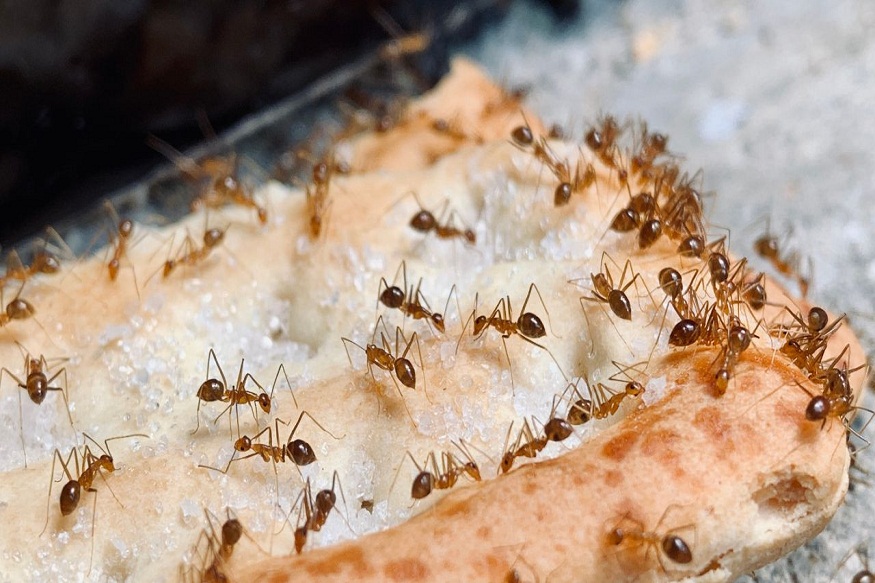The Role of Nano-Coatings in Protecting Buildings from Pest Infestations?
 The newest nanotechnology development creates advanced protective layers on surfaces to boost their endurance against damage. Nano-coatings build a shield at the molecular level that defends surfaces from water vapor and other particles including microorganisms. Through nano-coating.protective solutions Avata Pest Control brings innovative approaches to pest control by creating an insect resistant layer that modifies material surfaces to repel pests.
The newest nanotechnology development creates advanced protective layers on surfaces to boost their endurance against damage. Nano-coatings build a shield at the molecular level that defends surfaces from water vapor and other particles including microorganisms. Through nano-coating.protective solutions Avata Pest Control brings innovative approaches to pest control by creating an insect resistant layer that modifies material surfaces to repel pests.
How Do Nano-Coatings Prevent Pest Infestations?
Building materials undergo surface modification to create nano-coating barriers that pests find difficult to tolerate. Some coatings make surfaces less porous so pests cannot use them for shelter and breeding areas. The coatings include surface properties that taste bad to pests and make them avoidable. Nano-coatings’ water-repellent properties maintain a pest-free dry environment because pests prefer wet areas to live.
How Does Nano-Coating Help Businesses Save Money?
Nano-coating systems help customers save money because they prevent pests from returning after initial treatment. Standard pest control solutions demand regular spending for chemical treatments plus trap setups and property checks. Nano-coatings create durable protection for building materials while reducing their lifetime maintenance costs. Nano-coatings protect property from pests which helps avoid structural damage and related repair expenses.
What Benefits Do Nano-Coatings Provide for Building Long-Term Market Value?
Coated surfaces using nanotechnology help buildings maintain higher market value by defending them from pest injuries. Buildings covered by advanced coatings show reduced need for repairs and stay strong structurally for longer periods. Asset management benefits from nano-coatings because these materials protect properties and keep them attractive for longer which makes them more sellable and valuable over time.
Do Nano-Coatings Benefit the Earth?
Manufacturers create nano-coatings that let building owners protect their spaces with green pest control instead of traditional chemical methods. The new coatings decrease the amount of product that needs to be used which prevents harm to the environment. The coatings stay effective for a long period which cuts down on resource use through reduced product applications. Using sustainable nano-coatings helps property owners protect against pests without harming the environment.
How Do Nano-Coatings Support Sustainable Building Management?
Nano-coatings help us run buildings sustainably through their reduced need for harsh chemicals and their gentle effect on the environment. The enhanced durability of nano-coatings prevents frequent repairs or material replacement so you create less waste. The nano-coating system allows buildings to stay intact longer while reducing pest harm which helps us maintain our buildings sustainably yet efficiently. This technology works well within green building plans created by property managers to protect the environment.
How Do Nano-Coatings Benefit Overall Construction Work?
Nano-coatings improve building resilience by expanding their lifespan and decreasing maintenance expenses. These coatings protect buildings from damage caused by weathering and sun exposure plus keep away harmful microbes to deliver full building defense. Using nano-coatings helps property owners lower their maintenance expenses and keeps building parts functional longer. The inclusion of nano-coating technology helps builders develop better sustainable architectural solutions at reduced costs.
Conclusion
Buildings receive superior pest protection alongside substantial economic savings through nano-coating technology. Their pest-control technology saves money through reduced maintenance and increases property value over time making them useful for modern builders and maintenance teams. Homeowners who use nano-coatings to protect their properties save money in the long term and build more environmentally friendly buildings for future generations.



